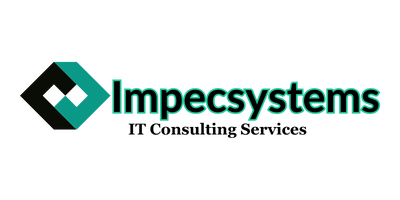IT on a Budget: Cost-Effective Strategies for Small Businesses
IT on a Budget: Cost-Effective Strategies for Small Businesses For small businesses, investing in Information Technology (IT) can be challenging, especially when operating on a limited budget. However, leveraging IT effectively is essential for growth and competitiveness in today’s digital landscape. In this blog post, we’ll explore practical and cost-effective strategies that small businesses can implement to optimize their IT infrastructure without breaking the bank. Section 1: Embrace Cloud Computing Content: Cloud computing offers small businesses a cost-effective alternative to traditional IT infrastructure. By migrating to the cloud, businesses can access scalable resources, reduce hardware costs, and pay only for the services they use. Here’s how small businesses can leverage cloud computing: Tip 1: Utilize cloud-based productivity suites like G Suite or Microsoft 365 for email, document collaboration, and communication tools. Tip 2: Host business applications and data on cloud platforms such as Amazon Web Services (AWS), Microsoft Azure, or Google Cloud Platform (GCP) to reduce infrastructure costs and improve scalability. Tip 3: Implement cloud-based backup and disaster recovery solutions to protect critical data without investing in costly hardware and maintenance. Optimize Your IT Budget Today Section 2: Opt for Open Source Software Content: Open source software provides small businesses with access to powerful IT tools and applications at no or low cost. By leveraging open source solutions, businesses can save on software licensing fees and benefit from a vibrant community of developers and users. Here’s how to incorporate open source software into your IT strategy: Tip 1: Consider using open source operating systems like Linux instead of proprietary alternatives to reduce licensing costs and enhance flexibility. Tip 2: Explore open source productivity software such as LibreOffice or OpenOffice as alternatives to expensive commercial suites for word processing, spreadsheets, and presentations. Tip 3: Adopt open source web applications and content management systems (CMS) like WordPress or Joomla for building and managing your business website without significant upfront costs. Section 3: Prioritize IT Security Content: Investing in IT security is crucial for small businesses to protect sensitive data and mitigate cybersecurity risks. While security solutions can be costly, there are budget-friendly options available to enhance protection without breaking the bank. Here are some cost-effective IT security strategies for small businesses: Tip 1: Implement basic security measures such as firewalls, antivirus software, and regular software updates to defend against common threats. Tip 2: Educate employees on cybersecurity best practices, including password hygiene, phishing awareness, and safe browsing habits, to reduce the risk of human error-related security breaches. Tip 3: Leverage free or low-cost security tools and services provided by reputable vendors and organizations, such as free antivirus software or cloud-based security solutions for email and web filtering. Section 4: Invest in Scalable Solutions Content: When considering IT investments, small businesses should prioritize scalable solutions that can grow with their needs over time. By choosing scalable IT solutions, businesses can avoid costly upgrades and migrations as they expand. Here’s how to invest in scalable IT infrastructure: Tip 1: Opt for cloud-based services and platforms that offer pay-as-you-go pricing models, allowing you to scale resources up or down based on demand without incurring unnecessary costs. Tip 2: Choose IT vendors and solutions that offer flexible licensing options and support for future expansion, enabling you to add users or features as your business grows. Tip 3: Leverage virtualization technologies to optimize resource utilization and reduce hardware expenses by running multiple virtual machines on a single physical server. Optimize Your IT Budget Today Conclusion: By implementing these cost-effective IT strategies, small businesses can leverage technology to enhance productivity, efficiency, and competitiveness without exceeding their budget constraints. Remember, investing wisely in IT can yield significant returns and position your business for long-term success in today’s digital economy. CTA (Call to Action): Ready to optimize your IT infrastructure on a budget? Contact us today to learn how our cost-effective IT solutions can help your small business thrive in the digital age.
IT on a Budget: Cost-Effective Strategies for Small Businesses Read More »

